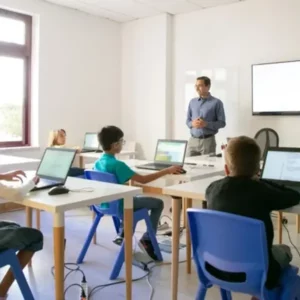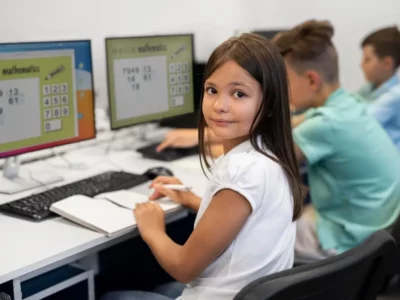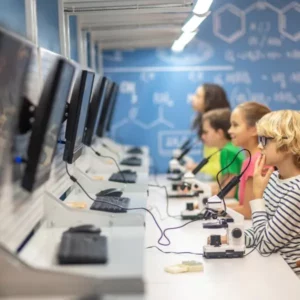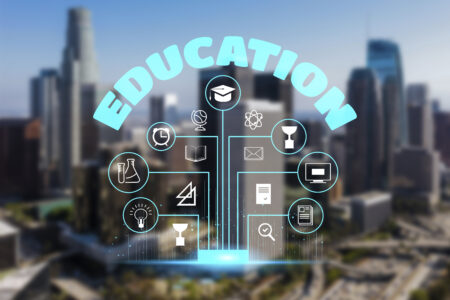In the 21st century, education has experienced a monumental transformation, and at the heart of this revolution lies technology. The integration of transformative tech in the classroom has ushered in a new era of learning, redefining the educational experience for both students and teachers alike. From interactive learning tools to personalized instruction, technology has become an indispensable asset, reshaping the traditional classroom into a dynamic and engaging environment.
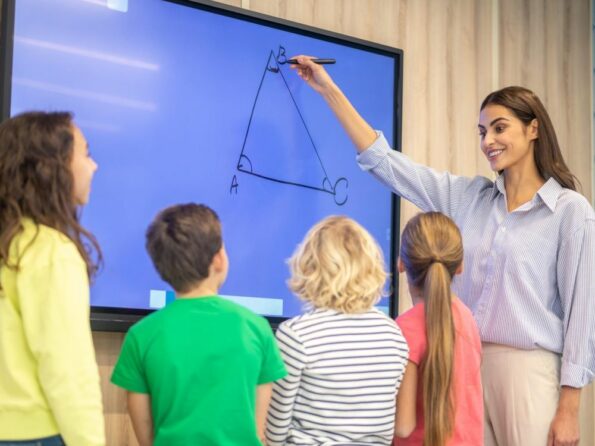
Embracing Interactive Learning
Gone are the days of passive learning, where students were confined to static textbooks and one-way lectures. Transformative tech has paved the way for an era of interactive learning, where students are active participants in their education. Through the use of computers, tablets, and interactive smartboards, lessons come to life with engaging multimedia content, simulations, and virtual experiments. This hands-on approach sparks curiosity, deepens understanding, and enhances information retention.
The incorporation of interactive learning has proven to be highly beneficial for students across various subjects. In mathematics, for instance, interactive applications allow students to manipulate geometric shapes or visualize complex equations, making abstract concepts more tangible and easier to grasp. Similarly, interactive language learning tools provide students with real-time feedback, fostering improved language acquisition and communication skills.
Personalized Instruction for Every Student
One of the most significant advantages of transformative tech is its ability to cater to individual learning needs. Through adaptive learning platforms and the use of artificial intelligence (AI), educational software analyzes students’ performance, preferences, and areas of improvement. Based on this data, AI algorithms create personalized learning paths for each student, ensuring they can progress at their own pace.
This tailor-made approach has transformed the one-size-fits-all model of education, ensuring that no student is left behind. For instance, students who excel in certain subjects can be given more challenging material to keep them engaged and motivated, while those who require additional support in specific areas receive targeted remediation. Personalized instruction not only enhances academic performance but also fosters a sense of empowerment and ownership of the learning process.
Expanding Horizons with Virtual Learning
The integration of transformative tech has propelled education beyond the confines of the physical classroom. With the advent of augmented reality (AR) and virtual reality (VR) technologies, students can embark on virtual field trips and explorations, immersing themselves in distant lands, historical eras, and even simulations of future scenarios.
Imagine students studying history by virtually walking through the ancient ruins of Rome or diving into the depths of the Great Barrier Reef during a biology lesson. These immersive experiences not only deepen students’ understanding but also ignite their passion for learning. Such virtual learning opportunities enable students to explore subjects in a way that transcends the limitations of traditional textbooks, bringing a new level of excitement to education.
Collaboration Beyond Boundaries
Technology has broken down geographical barriers, enabling collaboration and communication on a global scale. Through video conferencing and online collaboration tools, students can connect with peers from different countries, exchanging ideas, and cultural perspectives. This exposure to diverse viewpoints cultivates open-mindedness, empathy, and understanding, preparing students to be global citizens in an increasingly interconnected world.
Virtual collaboration extends to joint projects and research initiatives, allowing students from different regions to work together on common goals. These opportunities promote teamwork, critical thinking, and problem-solving skills—essential attributes for success in the modern workforce.
Empowering Teachers as Facilitators
In the age of transformative tech, teachers assume the role of facilitators and mentors rather than mere providers of information. Technology streamlines administrative tasks, such as grading and record-keeping, allowing educators to dedicate more time to building meaningful relationships with their students. By leveraging data analytics, teachers gain insights into students’ progress, allowing them to identify areas where students may be struggling and provide targeted support.
Furthermore, tech tools equip teachers with a vast array of resources, ranging from online libraries and educational videos to interactive lesson plans and teaching apps. This wealth of information empowers teachers to deliver more engaging and up-to-date lessons, catering to the diverse learning needs of their students.
Addressing Challenges and Concerns
While transformative tech brings a myriad of benefits, it is essential to acknowledge and address the challenges that come with its integration. The digital divide remains a significant concern, with some students lacking access to technology and the internet. Bridging this gap and ensuring equal access to transformative tech is crucial to promoting inclusivity in education.
Moreover, as students spend more time engaged with screens, concerns arise regarding their well-being. Striking a balance between technology use and outdoor activities is vital for maintaining physical and mental health. Educators must be mindful of the potential risks of excessive screen time and encourage healthy habits both inside and outside the classroom.
The Future of Transformative Tech in Education
As technology continues to evolve, so will its impact on the classroom experience. The future of education is undeniably intertwined with transformative tech. The rise of artificial intelligence, the expansion of immersive technologies, and the increasing connectivity of devices will usher in a new era of education that is dynamic, personalized, and interconnected.
Artificial intelligence is expected to play a crucial role in shaping the future of education. AI-powered educational platforms will continually adapt to students’ needs, providing real-time feedback and insights to both students and teachers. This level of personalized support will lead to improved learning outcomes and increased student engagement.
Additionally, the integration of virtual reality and augmented reality will become more prevalent, enabling students to explore complex concepts in three-dimensional environments. Whether it’s stepping inside a human cell to understand its inner workings or virtually visiting historic events, these experiences will enhance comprehension and make learning more memorable.
Moreover, the Internet of Things (IoT) will further transform the classroom experience. With IoT-enabled devices, educational institutions can create smart classrooms, where temperature, lighting, and other factors are optimized for enhanced learning conditions. IoT devices will also facilitate seamless communication and data-sharing between students, teachers, and administrators, streamlining educational processes.
Conclusion
In conclusion, “Transformative Tech: Reshaping the Classroom Experience” is not just a title but a reflection of the profound impact technology has had on education. As we embrace the opportunities presented by technology, we must also remain mindful of its potential challenges and strive to create an inclusive and balanced learning environment.
With transformative tech at the forefront, the classroom experience is set to be a journey of discovery, empowerment, and endless possibilities. Through interactive learning, personalized instruction, virtual experiences, and global collaboration, students will be equipped with the skills and knowledge necessary to thrive in the digital age and contribute meaningfully to society.




